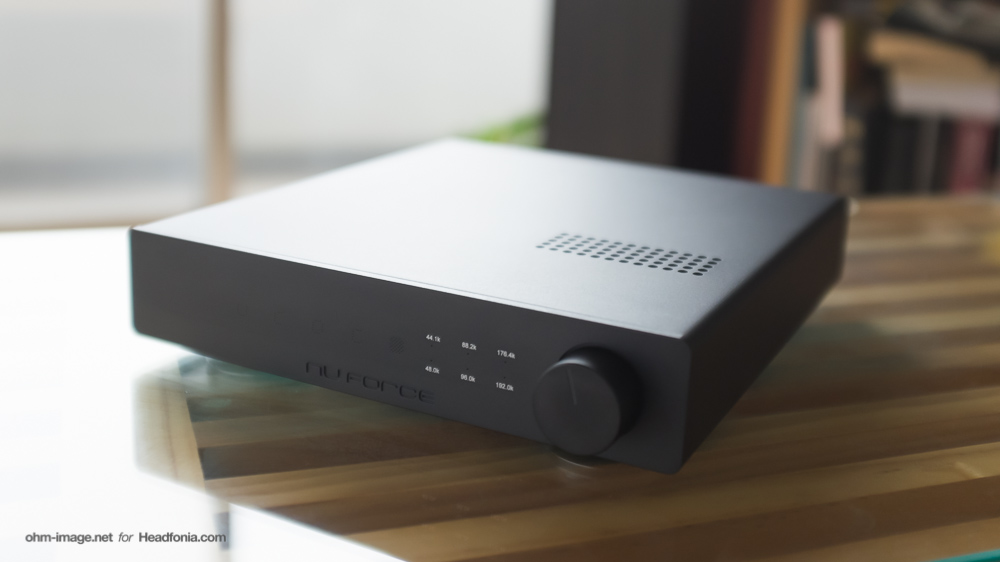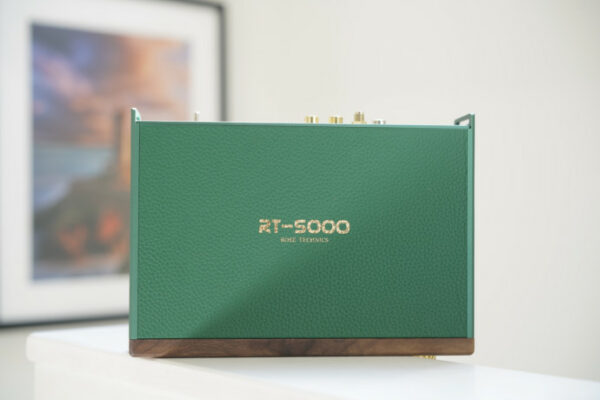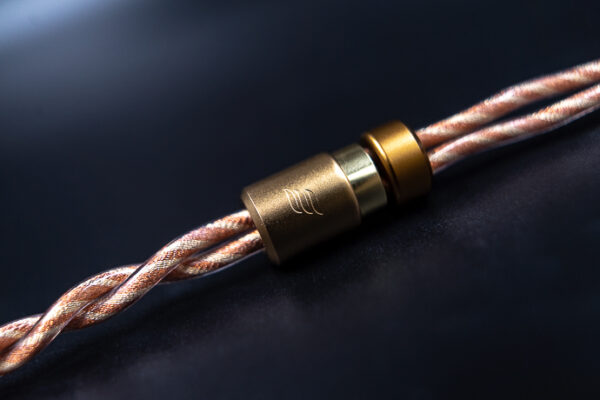Disclaimer: I borrowed the DAC-80 from Nuforce’s Japanese distributor during the course of this review.
Like many, my first experience with NuForce gear was with the NE7m. That was back in 2008. The NE7m was a good budget earphone. But it wasn’t something I would care to write much about. Today, Nuforce offer a bevy of interesting products at all price tiers. At 795$ USD, DAC-80 DAC/pre-amp is mid-tier among Nuforce several DAC offerings.
Why Discrete?
Quite simply, discrete components tend gel better in disparate environments. DAC-80 is equally at home on the desktop, feeding a headphone amp, as it is in the HiFi, feeding a power amp. And if you tire of the amps it feeds, the DAC-80 still does the job it always has. Its 2 Vrms line output is powerful enough for most living room amplifiers, and thanks to a well-implemented attenuator, plays equally nice with sensitive desktop amps.
I have owned a number of both discrete and integrated components. Living in a small flat, I don’t have the luxury of evangelising my druthers. HiFi pandits harp on the sonic benefits of discrete over integrated. For me, it’s about freedom- which is something I currently lack. I am lucky enough when I can squeeze between my dining room footstool and the large, single-pane glass sliding door that keeps most of the mosquitos out, on my way to the kitchen. When I upgrade to a house, I hope to get a proper dining table. And unbox several discrete units.
The DAC-80 would be a good place to start.
While Nuforce’s website is somewhat obtuse, the series into which DAC-80 fits, is not. Each component shares the same footprint, general aesthetic, and chassis. If you need a power amp, or a headphone amp, to go with the DAC-80, Nuforce have you covered. Each works flawlessly alone, or with its riends.
The Marque
Today, Nuforce offer few truly entry-level components, preferring to stick it out in the 500$ – 2000$ range, and extend their product line within those price bounds.
Every new generation, Nuforce sharpen an even more coherent design schtick. Perennial to their aesthetic philsophy is the trend to meld gizmo with minimalism. Logos are scarce, labeling is minimal, perfunctory, and some cases, daring. What do I mean by that? Let’s take the letters, U C O C, for example. They adorn the front plate, indicating which digital input is engaged. As an initialism, they are innocuous; as an acronym (and read “you cock”), they most certainly are not.
In addition to name calling, the four letters are very faint, even when lit up. That’s great for a beside rig. For its primary purpose in the living room and desktop, the DAC-80’s indicator lamps are frustratingly hard to see.
The Ins and Outs
All the necessary inputs are covered. You cock is broken down thusly:
1: USB
2: optical
3: Coaxial
4: Coaxial
Output volume of each is controlled via the massive pot on the front. The amp moves from standby to ON by pressing clicking the attenuator. The power rocker is found around the back. As long as you are using a Mac, or syncing from HiFi digital sources, DAC-80 is as easy to run as plug and play. Check the manual to use the DAC-80 with Windows.
Or, just get a Mac.
Know, however, that it doesn’t support native DSD playback. It uses the 32-bit AKM AK4390 chip decodes 24-bit / 192 kHz PCM material flawlessly. Actually, under the hood, it uses the same DAC board as found on the DAC100.
The Chassis
DAC-80’s parts are securely fastened. Paint quality is good, and inputs are well anchored in the chassis. Vents line the top and bottom. The power fits snug in the northeast corner. The case flexes in the center, and around the rear panel. Do not stack heavy gear on top of the DAC.
The spacing of inputs and outputs is perfunctory, and, apart from typography indicating the type of port, not labelled. On cursory glance, it is reasonable to assume that the DAC-80 also boasts RCA inputs, or that one of its coaxial connections is actually an output. It is not, and nope, it is not. While anchor and machine quality are good, visual cues, and general interface elements, are sub-par.
DAC-80 rests on four wide-set rubber feet. These are drilled into the chassis and sit in solid wells. They provide ample protection to the gear below, and from vibration.
Read more on the next page!








L.
I believe this is a fine dac, I’m just afraid a lot of people for this kind of money will look to other brands.
ohm image
I think nuforce should get onto the DSD stage as soon as they can. DAC-80 offers great performance and features.
L.
Or maybe work on their image as a serious Audio brand?
Michael Mercer
HERE HERE!
Michael Mercer
Great review! NuForce truly has some AMAZING products at real-world prices! I just reviewed their amazing HA-200 stereo headphone amps in mono-block configuration (SS class A) for EnjoyTheMusic – at $349 a piece?!?1 The performance was on-par with many 1k+ headphone amps I’ve tried – musical, quiet, engrossing!
I loved hearing about this DAC from them here!! We’re also testing out their HAP-100 stereo headphone amp (SS class A as well) – and Warren Chi can’t believe the performance for 600 bucks!!!!
Great job as always guys.
Keep it up!
Headfonia_L.
Don’t forget to sign up for the giveaway Mike 😉
Michael Mercer
I shouldv’e! LOVEd their HA200s in monoblock config! Also diggin’ their HAP-100 stereo class A solid-state amp too!